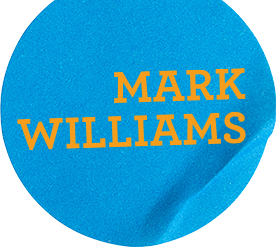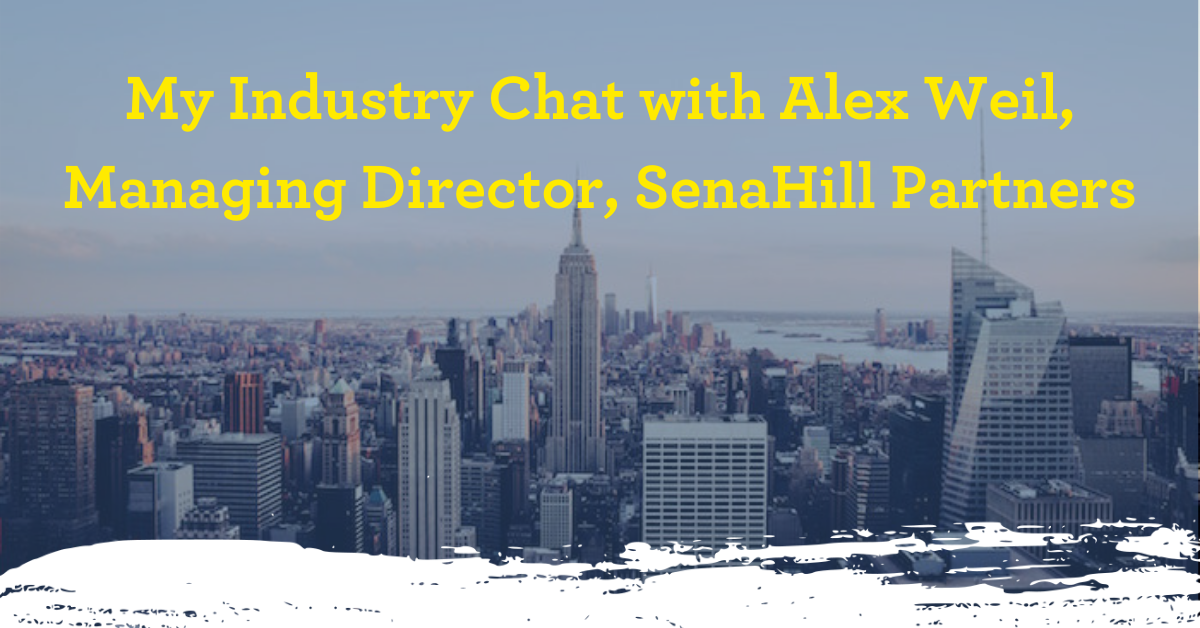SenaHill is a merchant and investment bank connecting the dots between global financial institutions and financial technology entrepreneurs. I recently enjoyed the opportunity to sit down with Managing Director Alex Weil, to discuss FinTech innovation and the impact of changes in our industry.
Thank you for this interview Alex! Please share a bit about SenaHill’s history and how the company has evolved to what it is today.
“SenaHill started about five years ago and is comprised of a mix of entrepreneurs, operators, strategy consultants and investment bankers. We are a FinTech only merchant and investment bank with three main businesses. We invest in early stage seed companies, provide investment banking advisory services, and our newest SenaHill Solutions business provides strategic consulting in areas, such as, corporate strategy, innovation strategy, corporate venturing, product strategy, and other growth strategies. Most of our time is spent on the investment banking side for early stage FinTech companies. Our practice is segmented into five FinTech sub-verticals: Insurtech and data & analytics, emerging technology practice (comprised of blockchain, AI, cyber, crypto, etc.) wealth tech, capital markets tech, and alternative banking and lending. I head up insurtech and data & analytics.”
Tell me about how you form partnerships. How do SenaHill and the companies you work with find each other?

“We are a top 20 Institutional Investor ranked FinTech firm, so, people can find us, but we also have an outreach program to ensure we meet with the right teams on consistent basis. We cover approximately 1,500 investors and strategics and have about 200 senior-level executives in our proprietary expert network that have, or are currently in, various functions and roles within financial technology or financial institutions.”
Specific to insurance, what isn’t being discussed enough? It seems that InsurTech and FinTech are everywhere. In your opinion, what isn’t being talked about enough on the insurance side?
“What would be great to talk more about is product innovation and the related cycle times. There is product innovation, but the financial traction has been much slower than people would have hoped. With some of the new core system innovations that are going to either replace or augment parts of legacy systems, I believe that will facilitate product innovation efficiencies and more flexibility around product design at a lower pain, or cost, point. And instead of having year-long cycles or more to launch products, I think product innovation will continue to accelerate and help address customer needs in a much more flexible and adaptive fashion.”
Do you see any changes to product distribution specifically? From the customer standpoint, there’s a lot of focus on paying claims faster, or making changes to a customer’s policy. But from a distribution standpoint, what are you seeing?
“As you know, disrupting distribution has been a key focus of emerging InsurTech players. Probably two-thirds of them, at least initially, were focused on distribution. Back to my earlier comment, the proof is in the pudding with the traction and the premium generated. If you look across the board, I think meaningful premium generation has been very difficult vis-à-vis the cost to acquire those customers. We’ve seen a couple firms recognize this and have refocused on becoming business-to-business technology platform providers, which will facilitate and enhance distribution channels, not take over it.”
What makes SenaHill stand out amongst its competitors? There’s a lot of private equity in the space. What makes you different?
“Our team has a rich and diverse background, which uniquely benefits entrepreneurs, investors and large strategics. We know what it means to be an entrepreneur; we have had to make payroll from our own bank accounts and truly understand what that feels like. We have also invested in companies, run strategy and internal M&A teams at large financial institutions, and have been M&A advisors at firms like Lazard, Citi and UBS. Members of our team have founded firms and financial technologies, such as: Lava Trading, which was sold to Citigroup for several hundred million dollars; the Receivables Exchange, which was sold to the New York Stock Exchange; Edgetrade, which was sold to Knight Capital. So, we believe that we have a much deeper level of experience than our competition and can provide unparalleled advice and connectivity into the fintech ecosystem. And as a result, we think we are best positioned to bring the “David and Goliath” of financial services together.”
In your work with startups and the large financial institutions, what are the barriers that exist between the two of them outside of finance, how does SenaHill bridge that gap?
“There’s a cultural divide, particularly in insurance, where the speed at which a startup needs to operate versus the speed at which a large institution moves is significantly different. Institutions are not as nimble and incentives across groups are not aligned to find creative solutions, so it becomes easier for many groups to say no versus yes given all the other demands currently faced by these groups. We have first-hand experience with situations where IT, risk, legal & compliance, regulatory, procurement and the business lines are all moving in different directions at inconsistent speeds with uncoordinated objectives. We find that many of these large institutions are set up to deal with the Oracles or IBMs of the world versus startups. Procurement is too often the gatekeeper of innovation, which is a challenge because it can be a suffocating 9-to-18-month process to get through. In many instances, these large firms are looking for multiple years of financials, high credit ratings, move slowly, etc. and then there are the 500+ questionnaires on data governance or security; or they require 5 stages of POCs and that’s just not feasible for a startup that may only have a limited cash runway.”
What advice would you give a FinTech founder or a FinTech company, that is looking to be at the forefront of the tech transformation?
“Run fast, execute, execute, execute. There’s a lot of data and emerging technology out there. It is difficult to know if many of these firms will have long-term competitive advantages, so establishing a value proposition early with flawless execution will be essential. Once firms have share of mind, partnered or integrated with established players, one’s market position become more defensible and there is an inherent friction to change providers – call it a homefield advantage. There has been a lot of ideation in the past and new businesses / technologies have emerged; however, the more successful ones will have to prove that they can scale rapidly to justify their valuations and long-term viability.
In terms of advice, CB Insights said it best at a recent conference in NYC that change happens gradually, then suddenly. I believe we are at an inflection point where there is broad based agreement that change will happen, it is just a matter of how fast people move.”
Can you describe the trends that you’re seeing in the industry, or that you would expect to see over the next five years?
“With insurance, there is a more significant degree of collaboration and recognition of the need to change than we’ve seen before, and a massive uptick in insurance technology investments from the large players. I was involved in setting up a corporate venture capital fund at one of the largest reinsurers in early 2014, and the number of insurance companies investing in InsurTech back in 2010 to 2014 was very low. By 2017, investment in insurtech was approximately two billion dollars and close to 60% of those InsureTechs had an (re)insurance company invested in them.
So, there’s just been a tectonic shift in the industry and its recognition of the power of innovation, particularly with the emerging insurtech players. And insurance companies are understandably nervous and recognize the challenge of innovating internally due to either a mismatch of tech talent, older workforce, the wrong incentive structure, and/or challenges recruiting due to location or legacy perception issues. So many firms have, and continue to, focus on external innovation. And one of those ways is through a corporate venture fund making small investments in insurtechs that are strategically aligned with their business.”
Are there situations where some of the insurance companies investing in these ideas would be competitors of yours?
“Not at all. We’re not competing with venture capital funds or insurance companies. We are a strategic advisor and look to partner with both financial investors and strategic investors as they make investments or look to monetize them and re-deploy capital.”
In addition to making a return, what are investors looking for in the InsurTech space?
“From the (re)insurance standpoint, I think they are looking for ways to reimagine their business, drive operational efficiencies, capture new distribution channels, find alternative data sources to be used in areas such as underwriting, claims, fraud detection, preventative maintenance, or worker safety. In my discussions with folks in the industry, I have been told that certain strategics view their corporate venture investments as R&D for the insurance industry. I think it is a great strategy, and at some point, these start ups could either become acquisition targets or acquirers themselves, and we feel that we are best positioned to advise in those situations.
As far as financial investors, they want to understand if there is a burning platform issue and how that business solves that issue. And do they have a competitive advantage in a large and growing market. They’re seeking the right management team with the correct skill set, both in insurance and in technology, and they’re looking for a clearly articulated value proposition and a well-defined go-to-market strategy.”
I see you guys are going to that InsureTech Connect convention. What are your thoughts on that kind of platform? And what would be the reason to attend?
“The InsureTech Connect is obviously one of the best attended insurtech conferences. The conference brings people together who are at the vanguard of change, so you get a nice mix of investors, entrepreneurs and insurance executives. It’s a great place to network, share ideas, make new connections, and catch up with folks you may not see or interact with frequently.”
Last question, what’s a perfect weekend for you?
“I love cycling — my family would say too much. So, on weekend mornings, I typically go out for four-to-five-hour ride with a group of friends. I find cycling a great way to reset from the week and keep in shape.”

